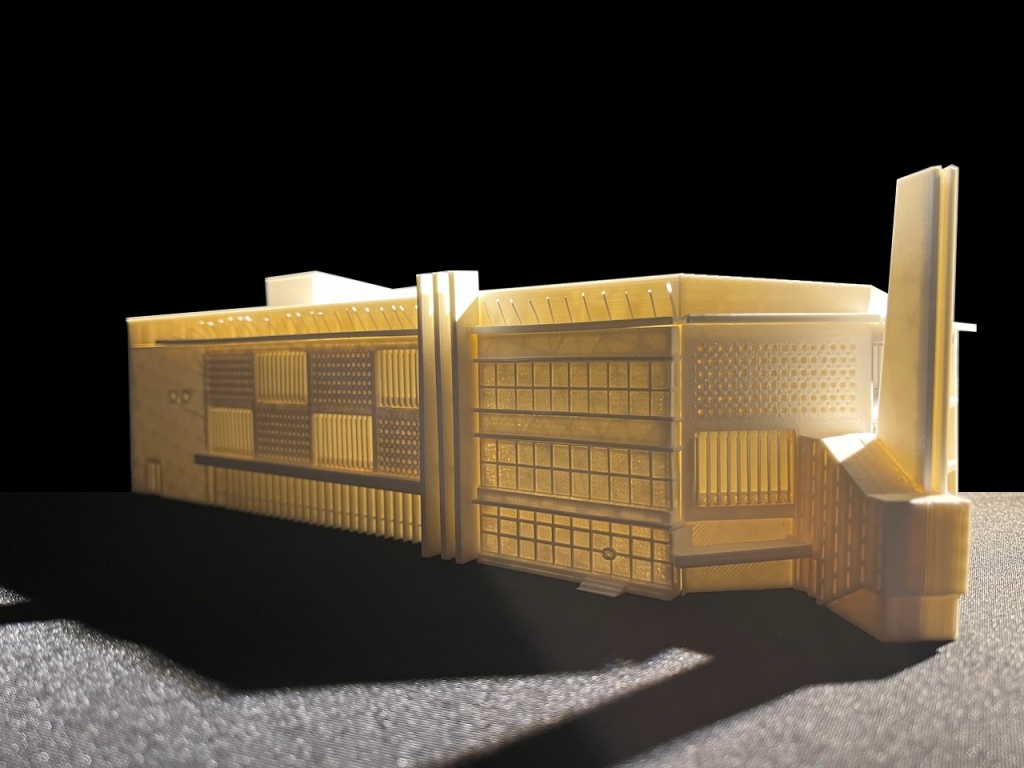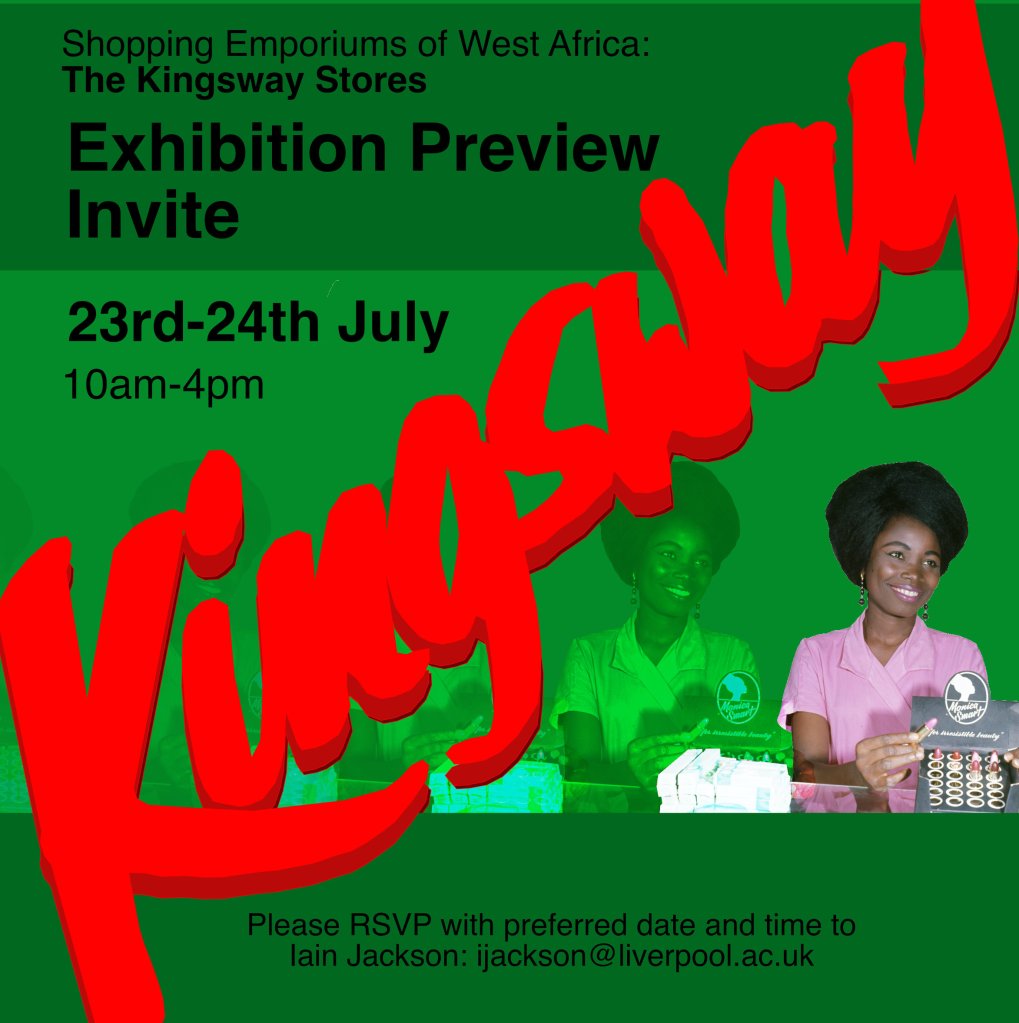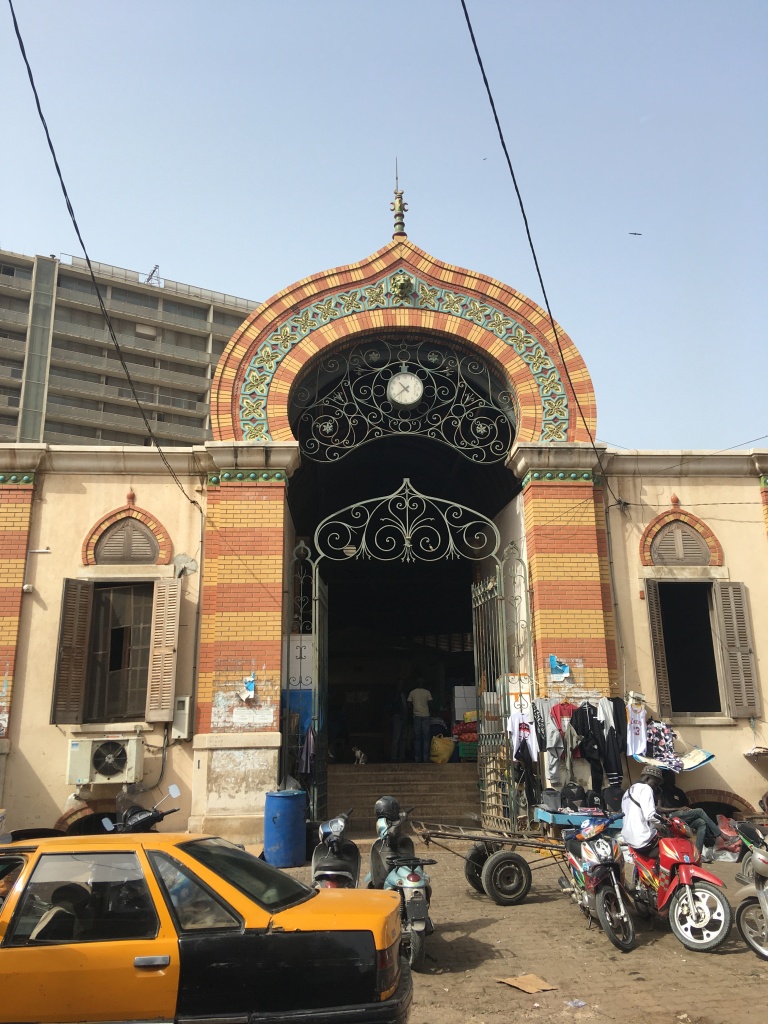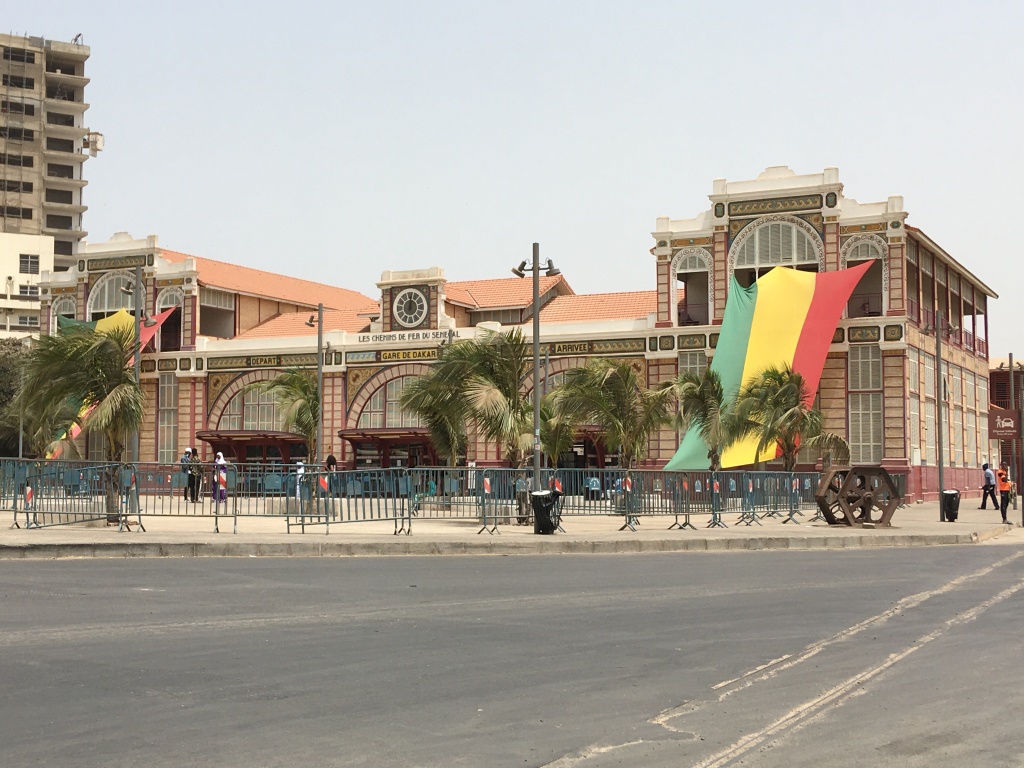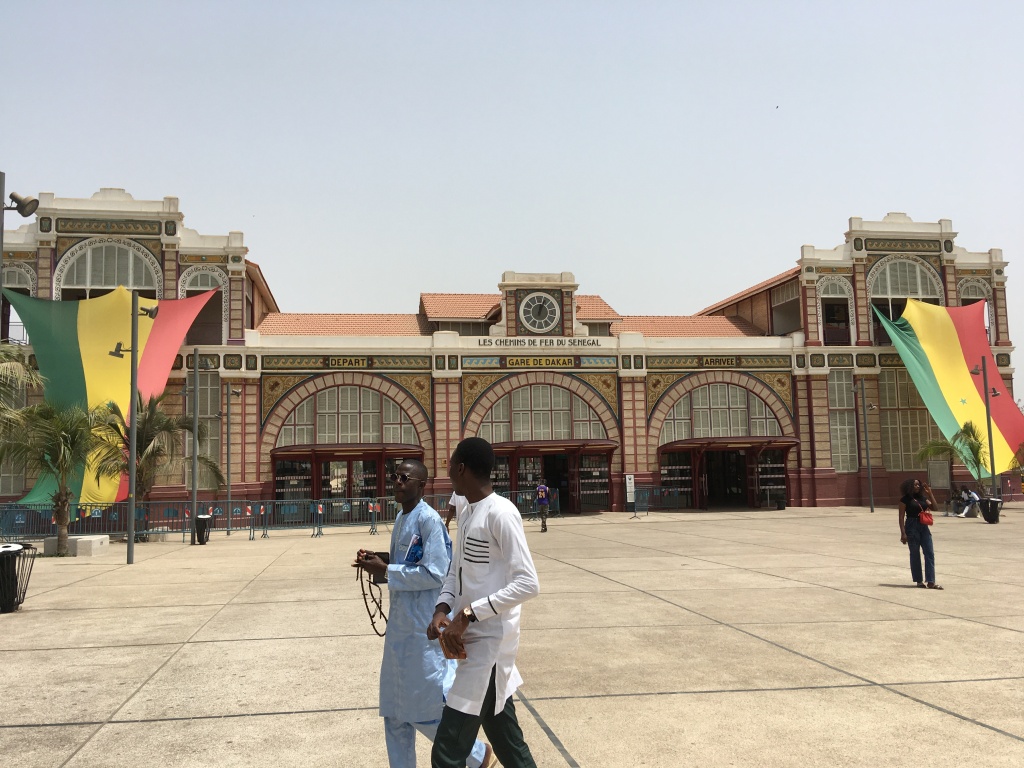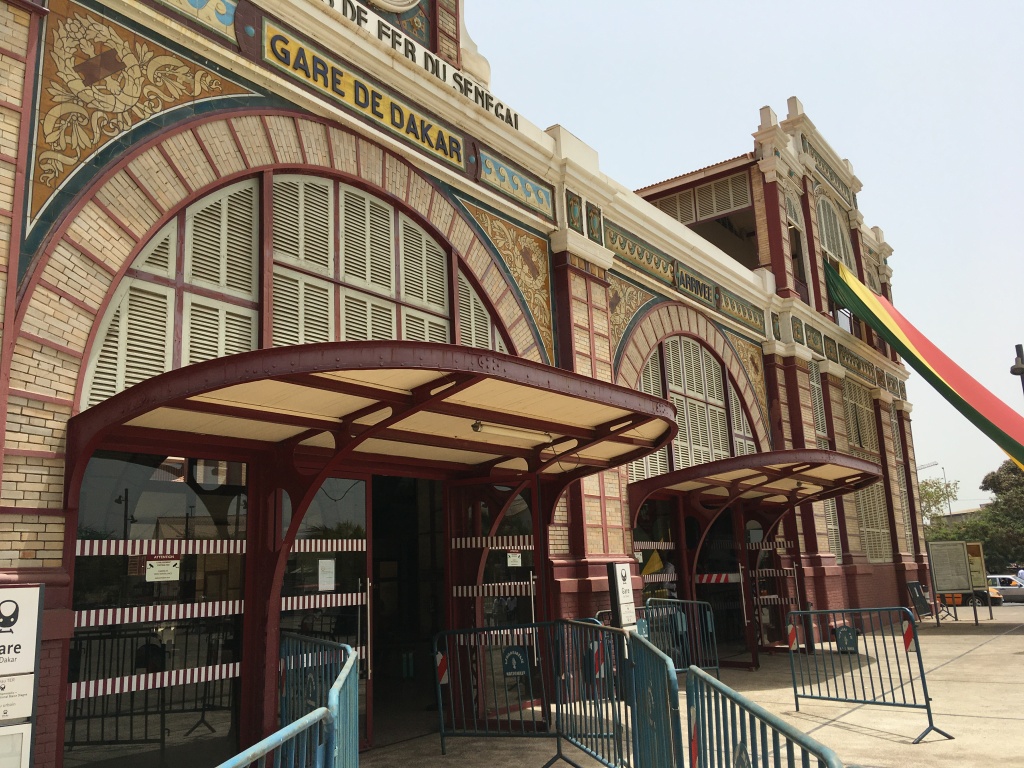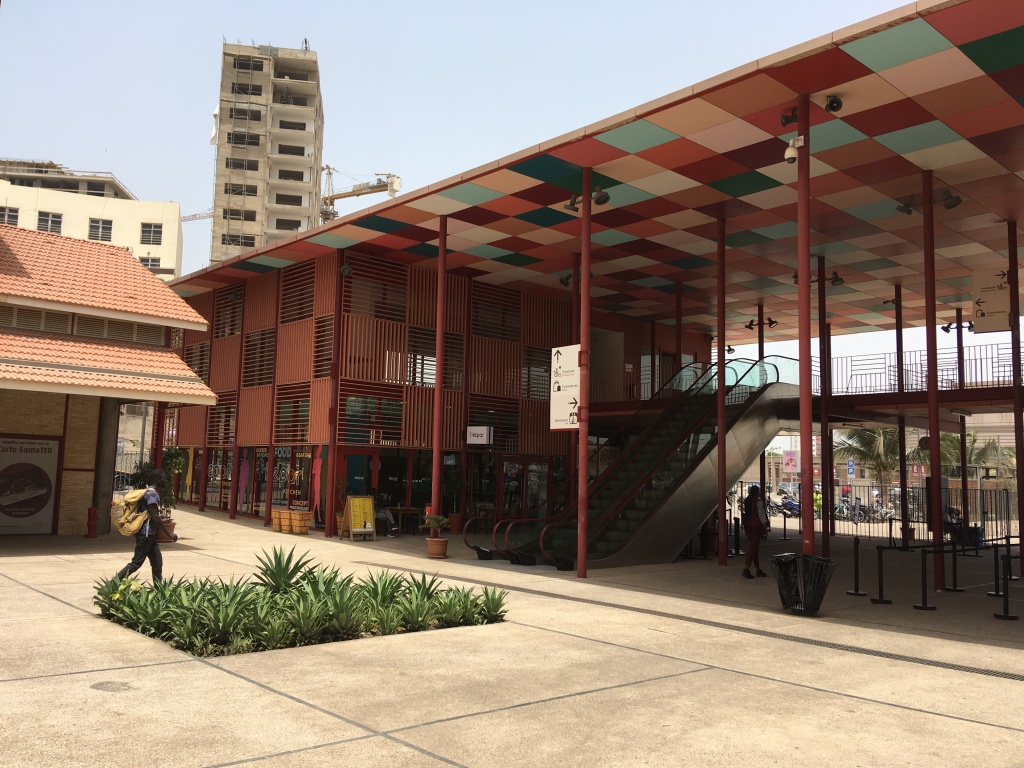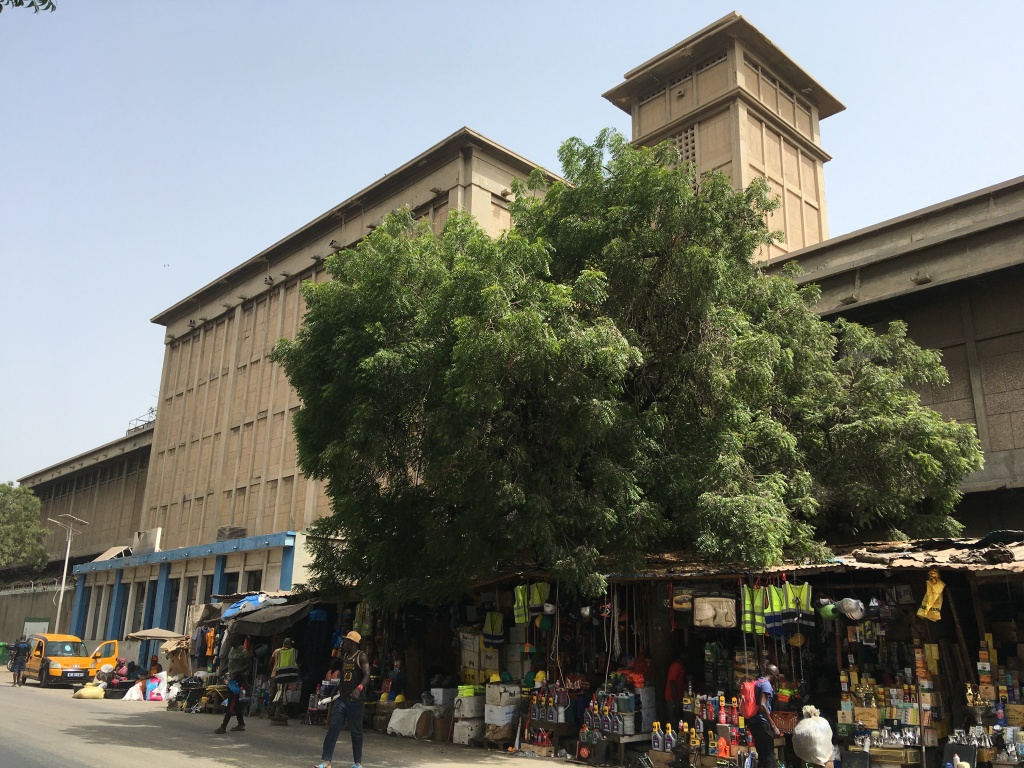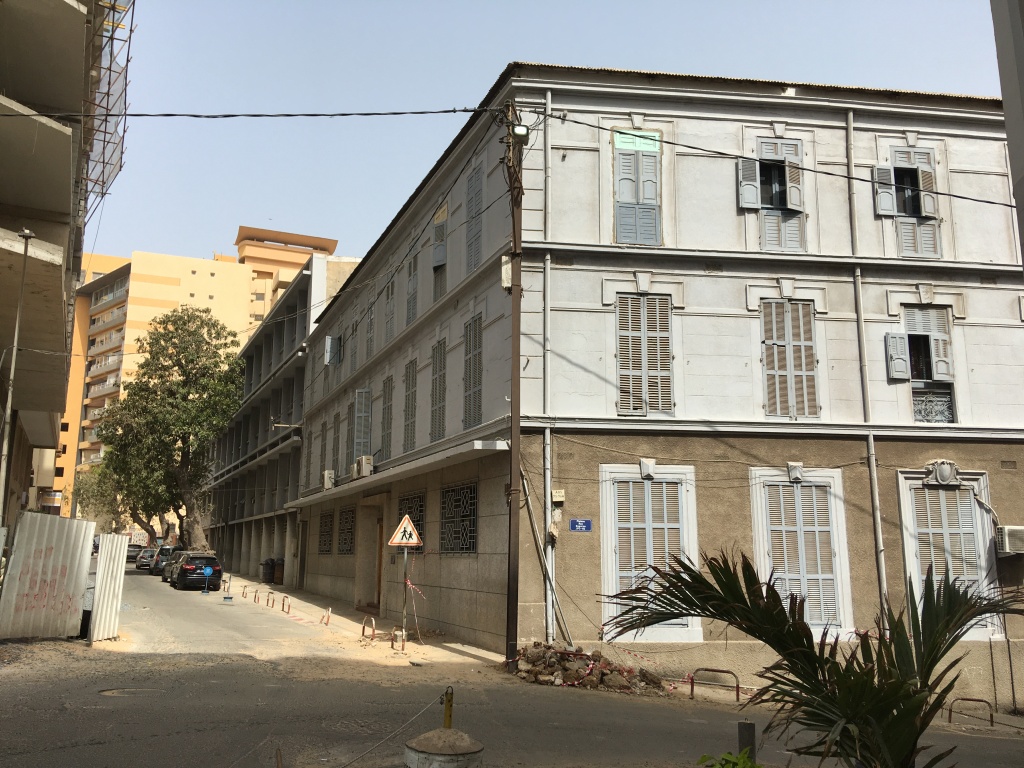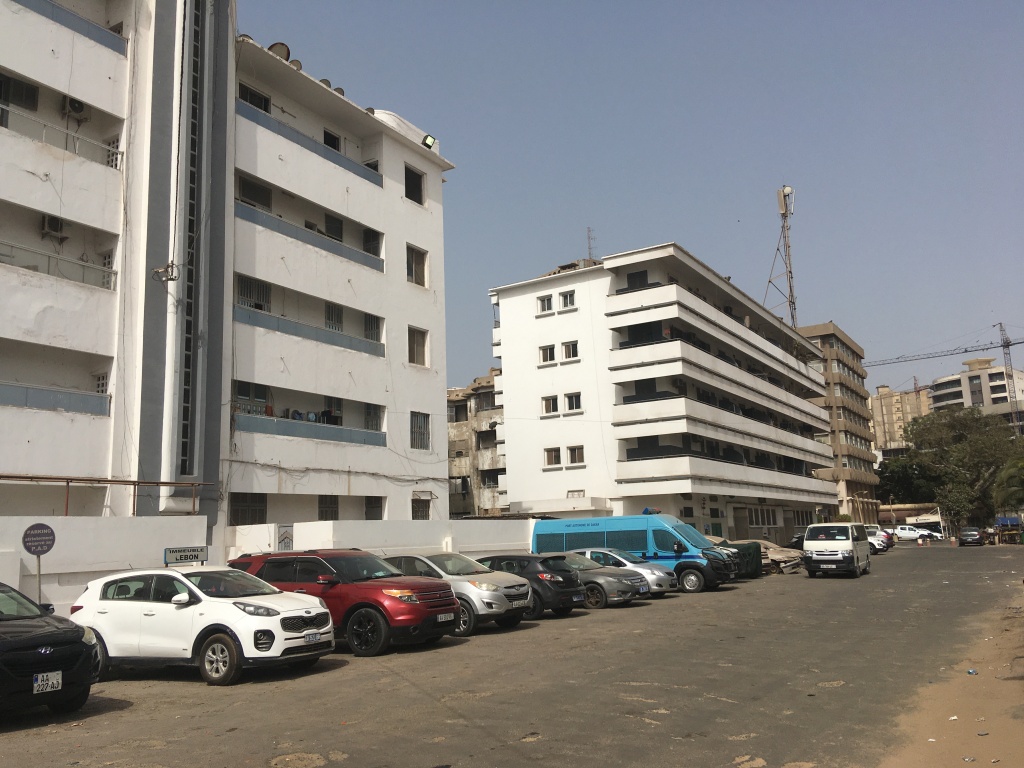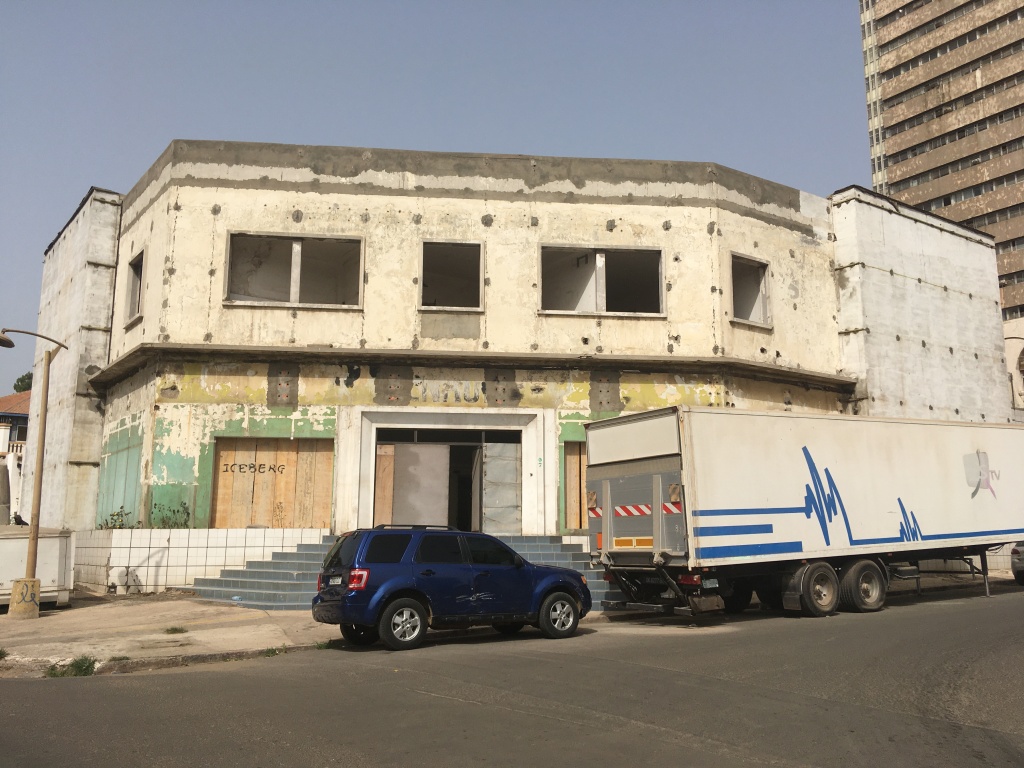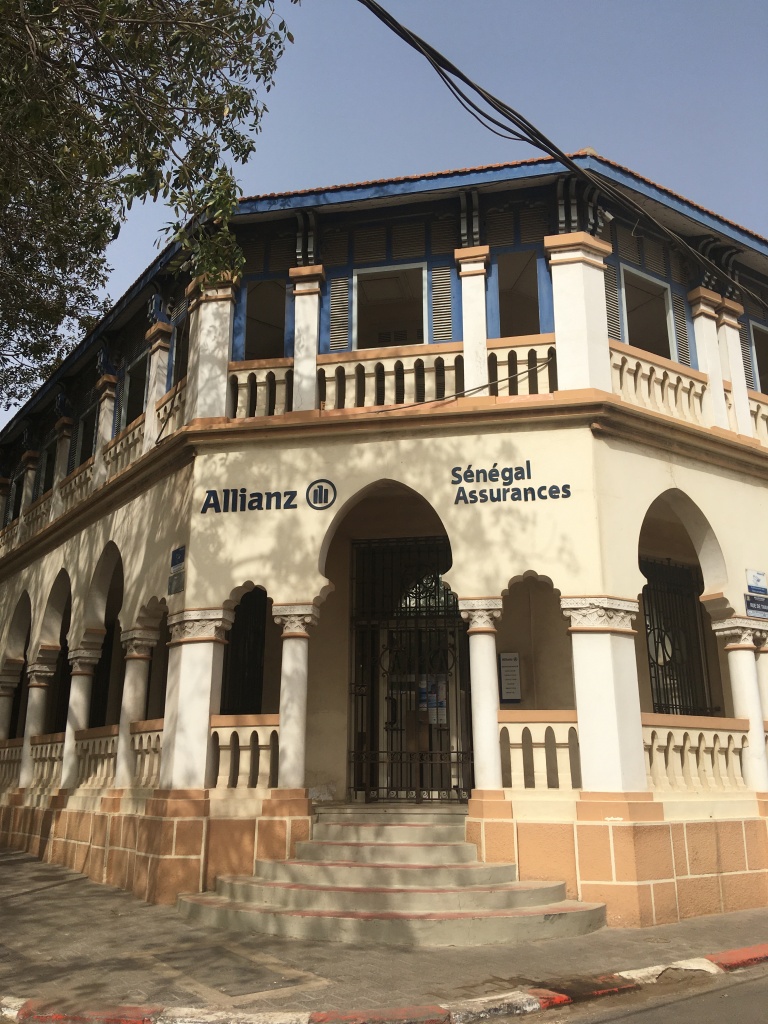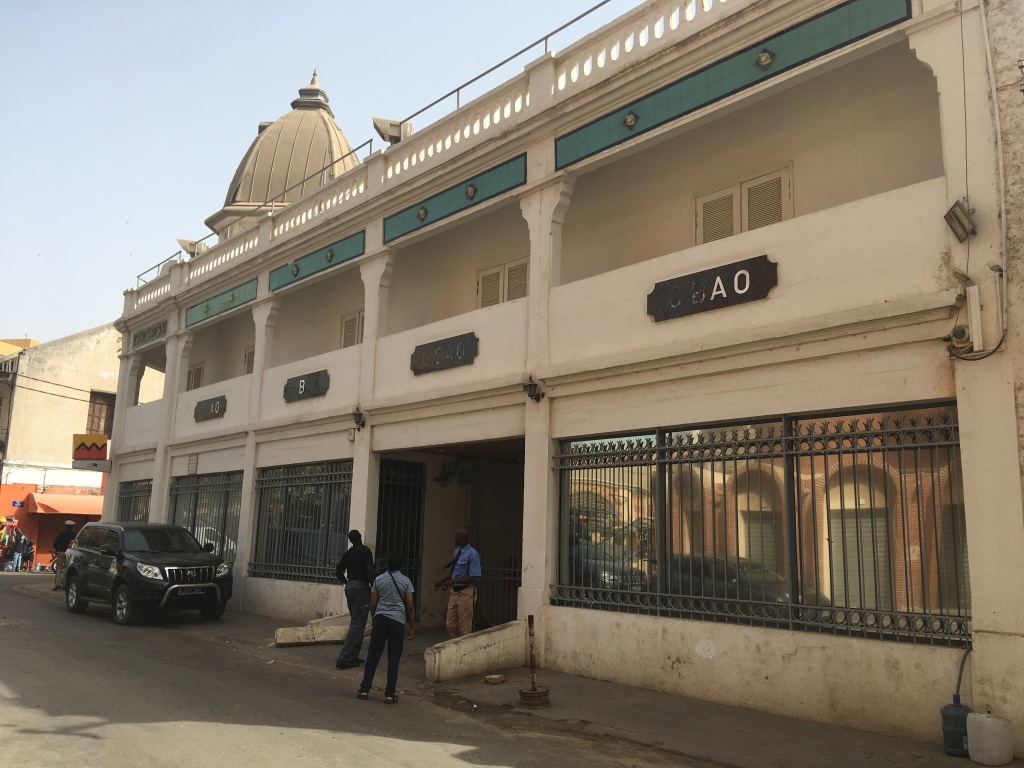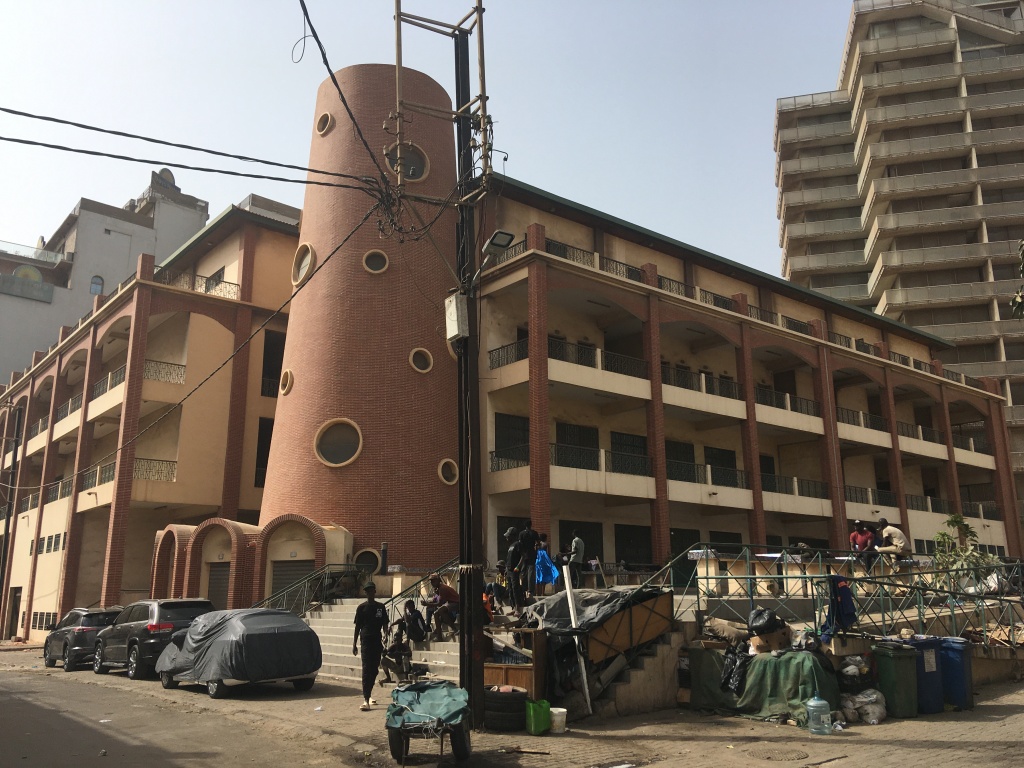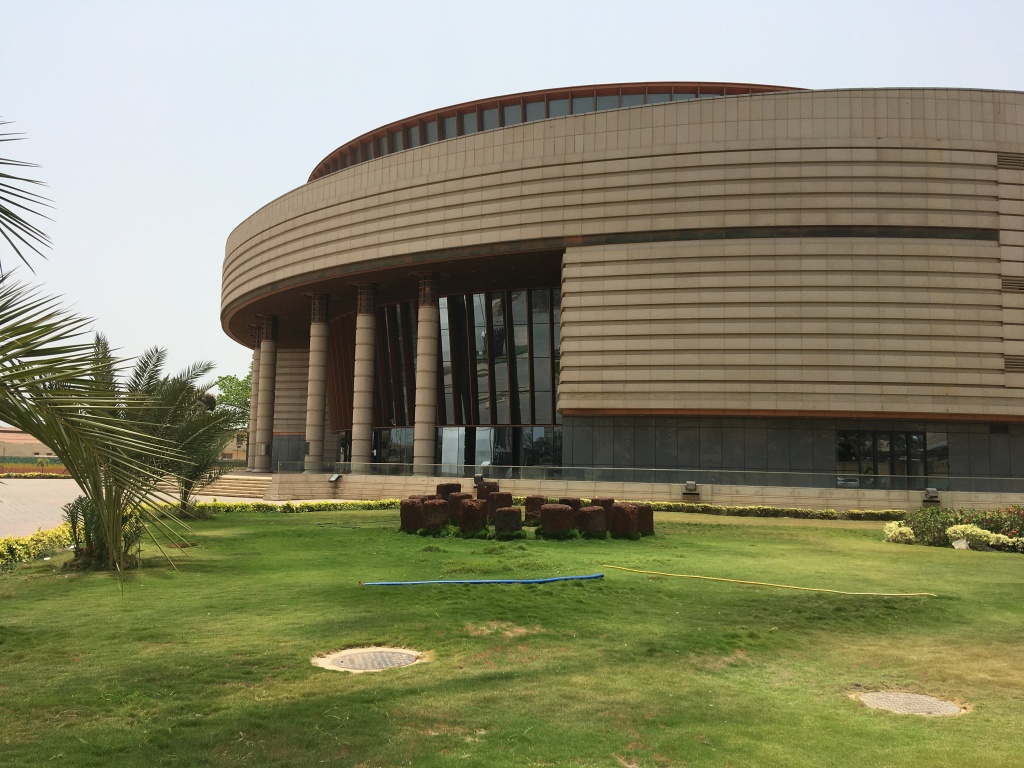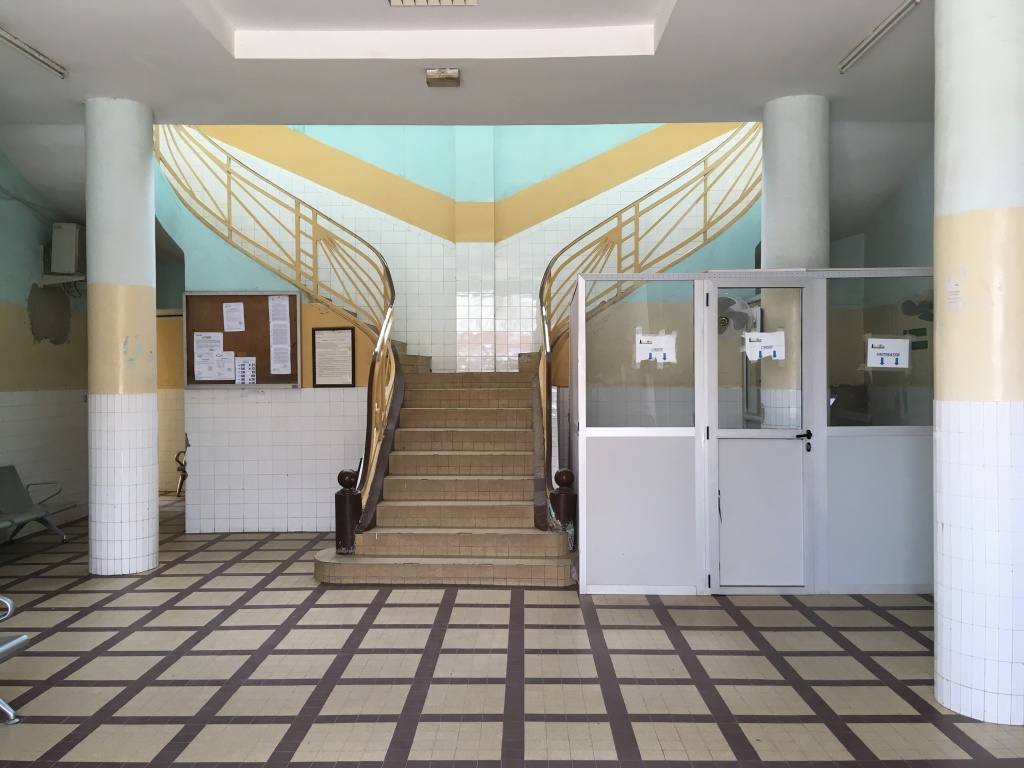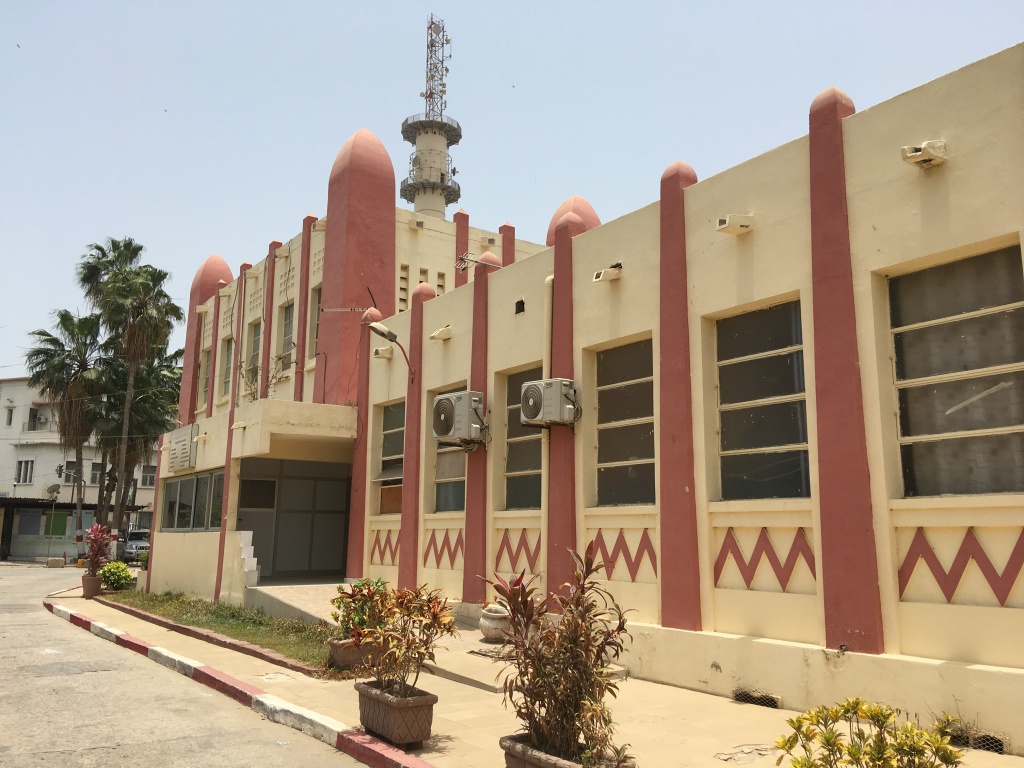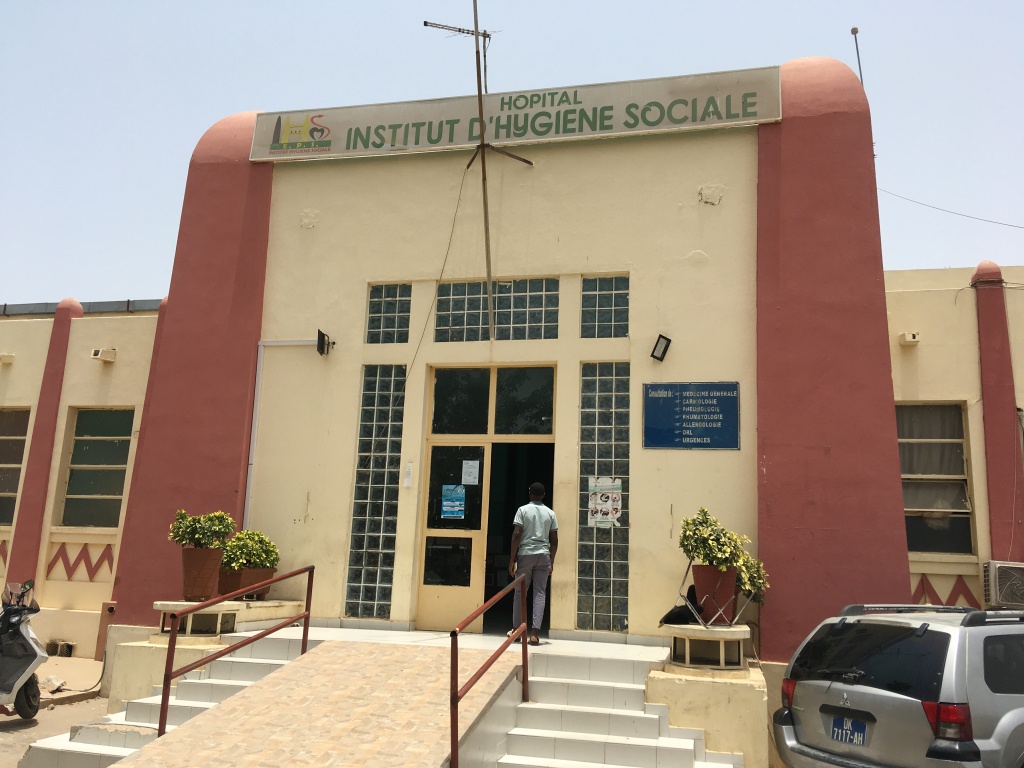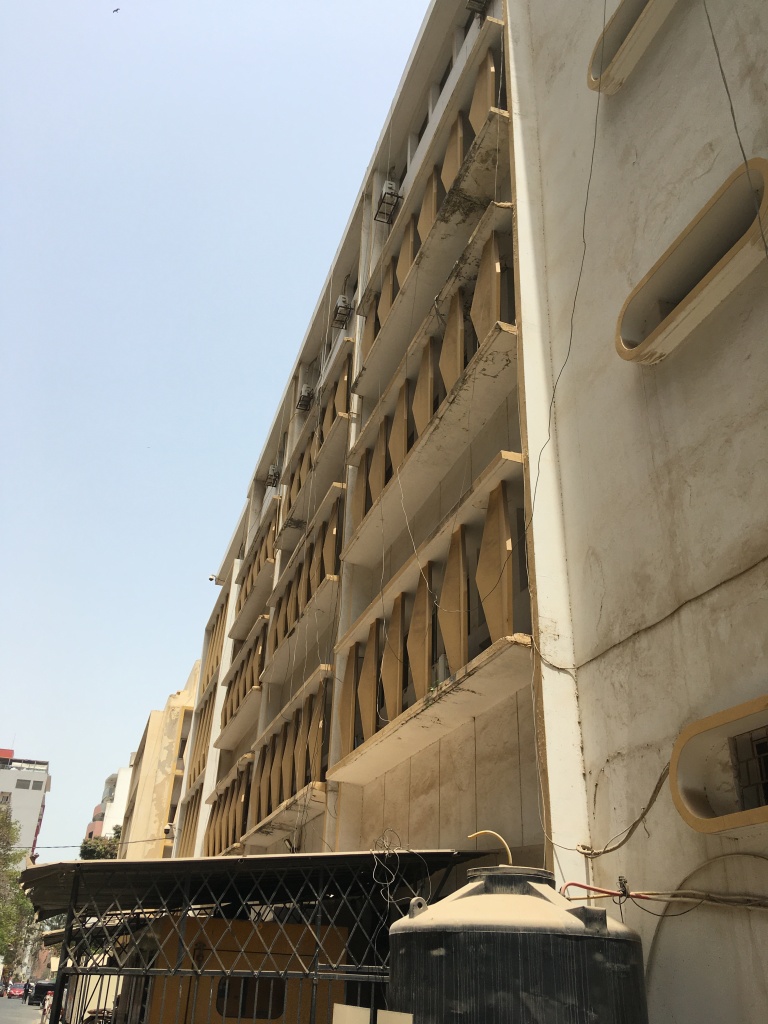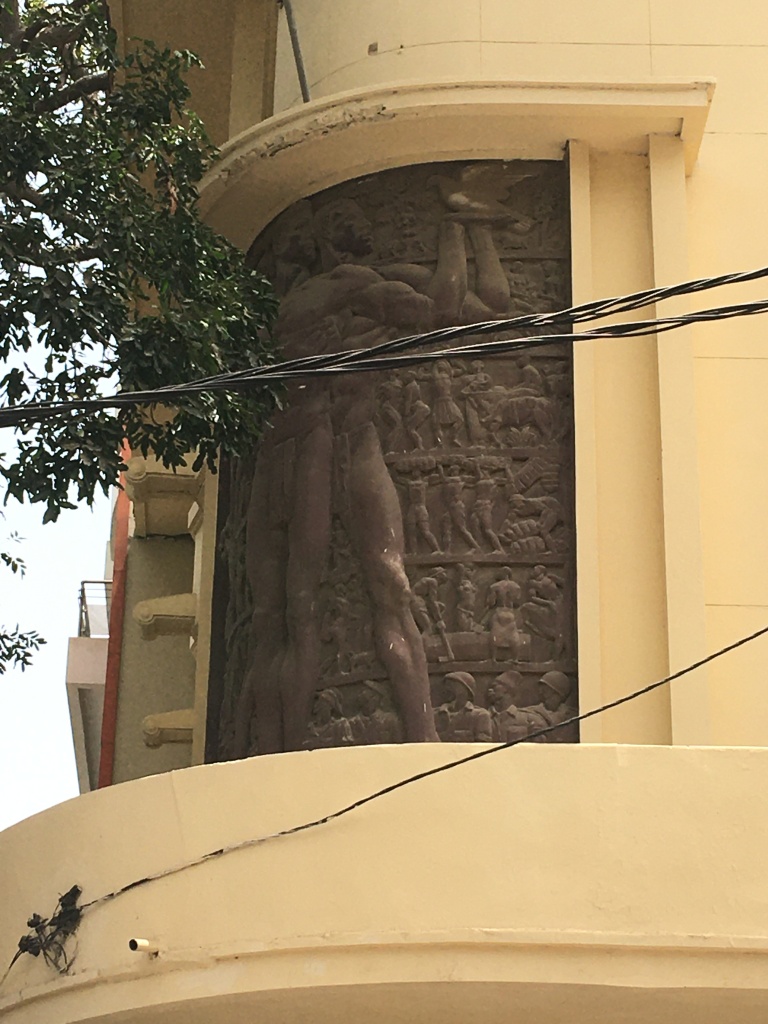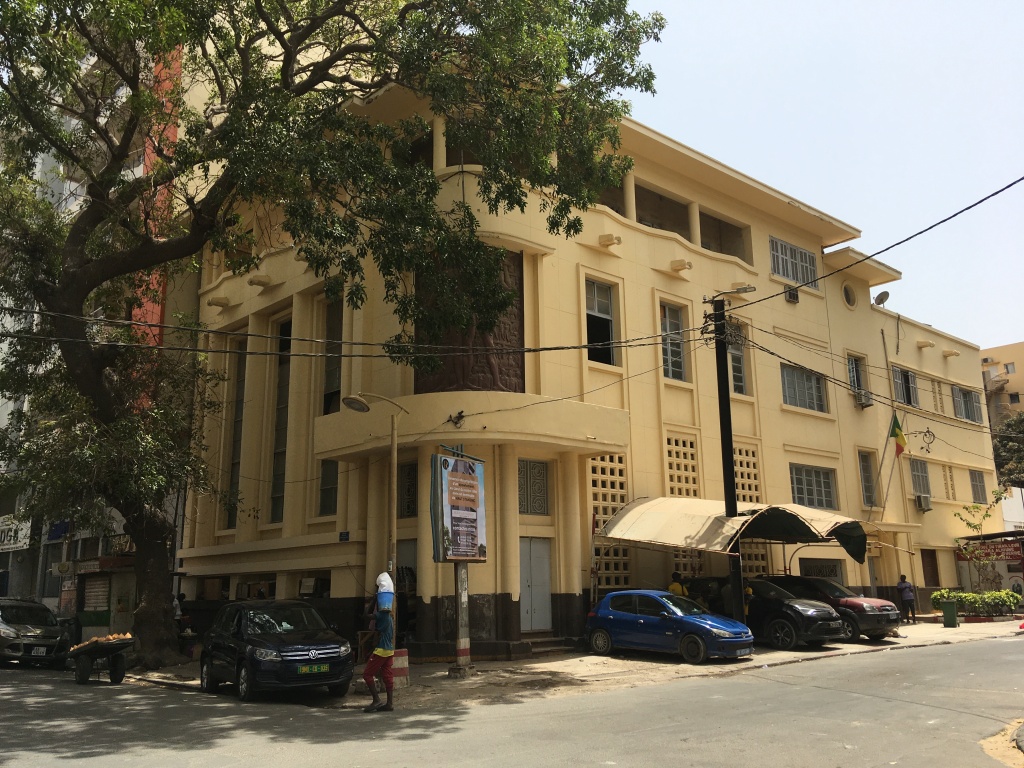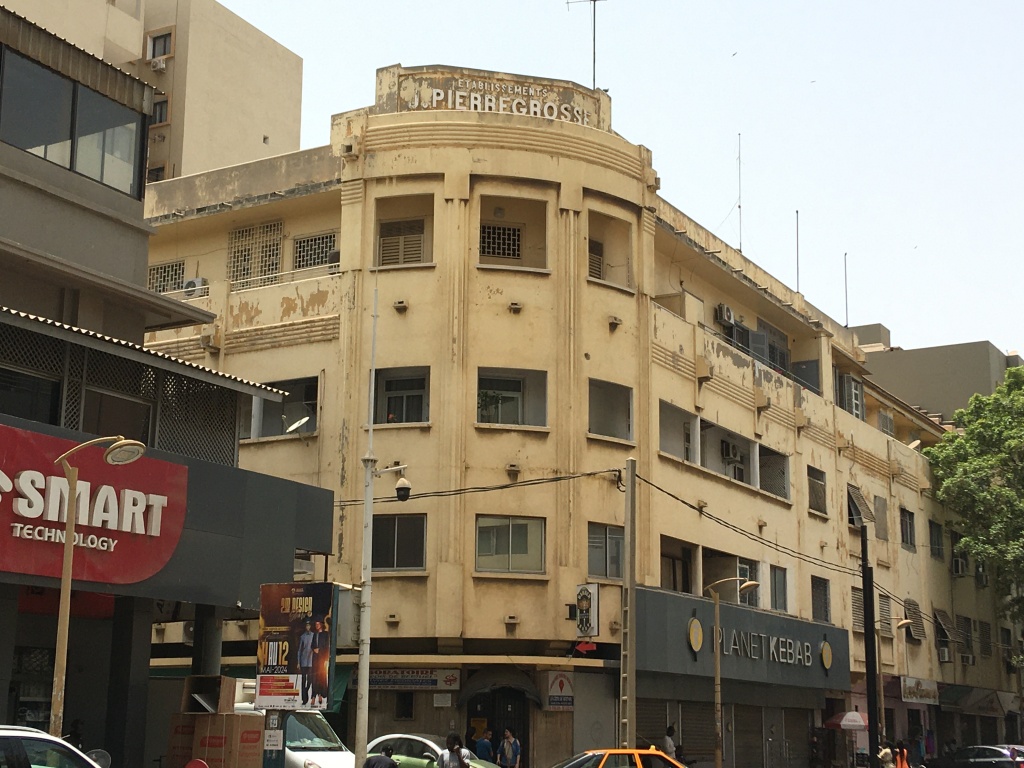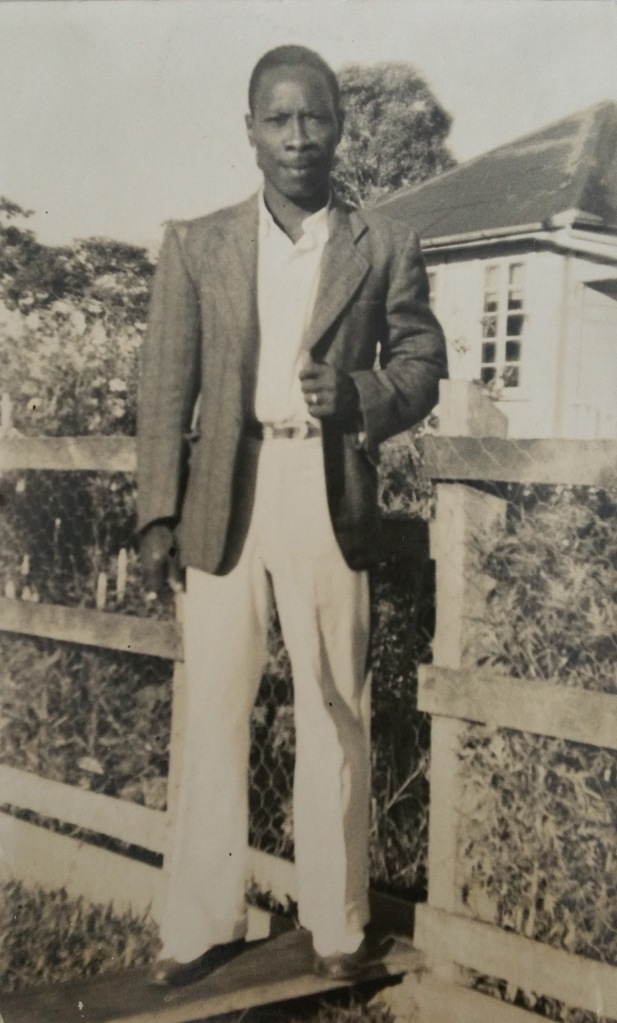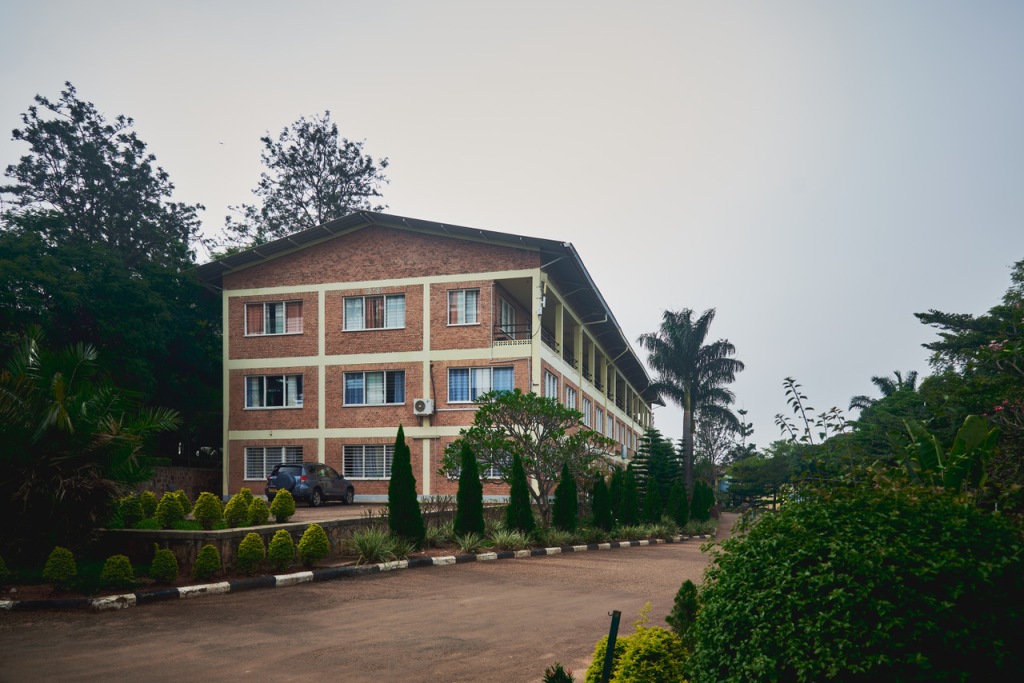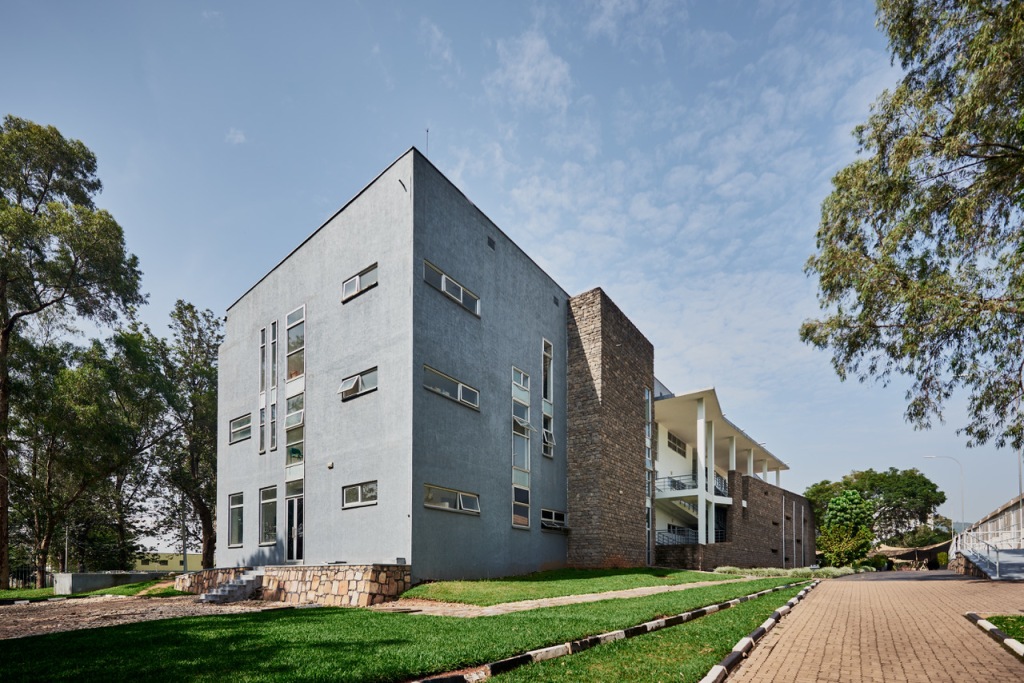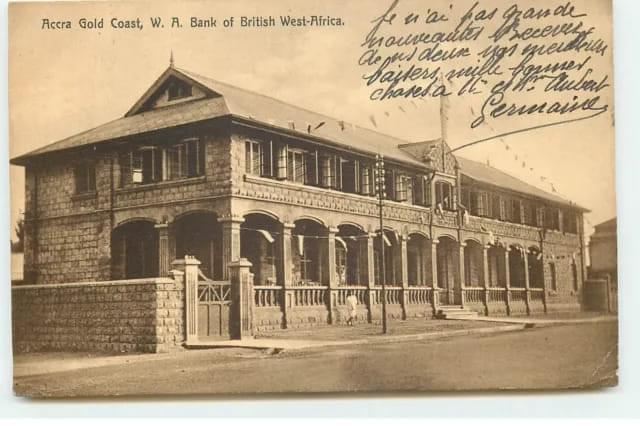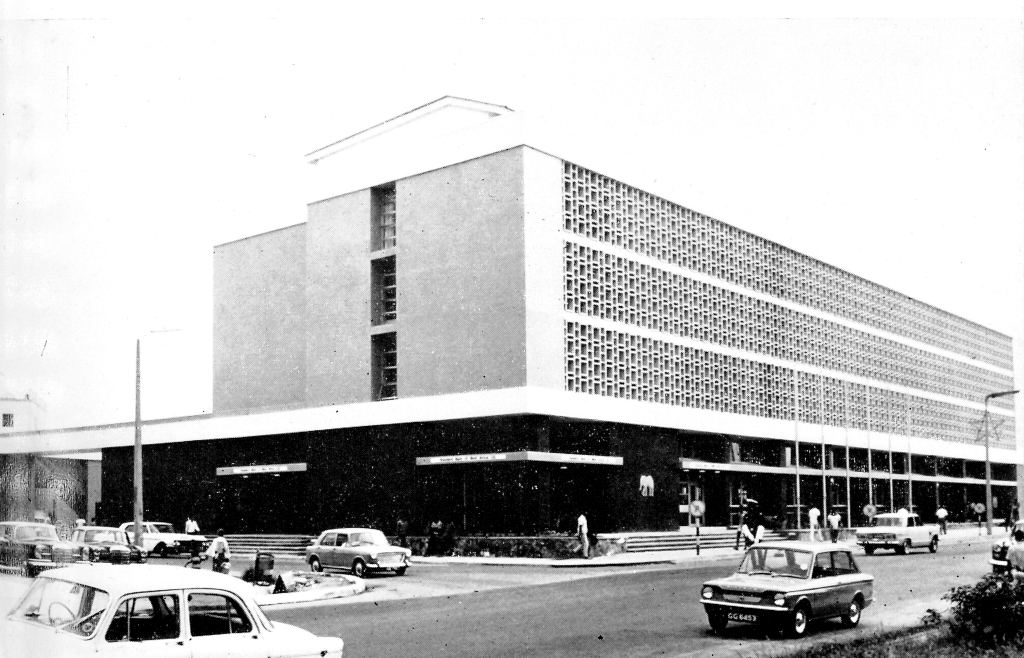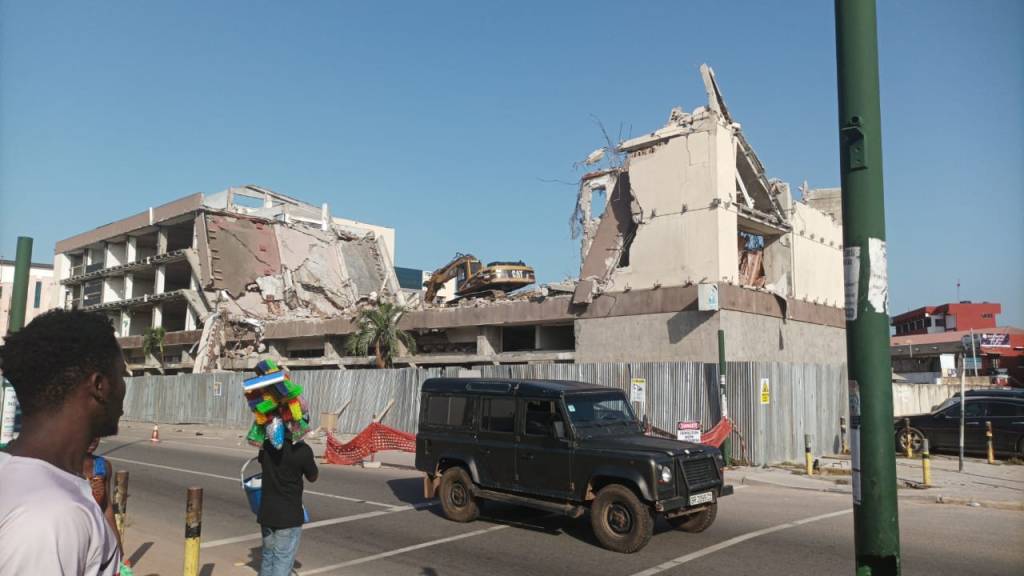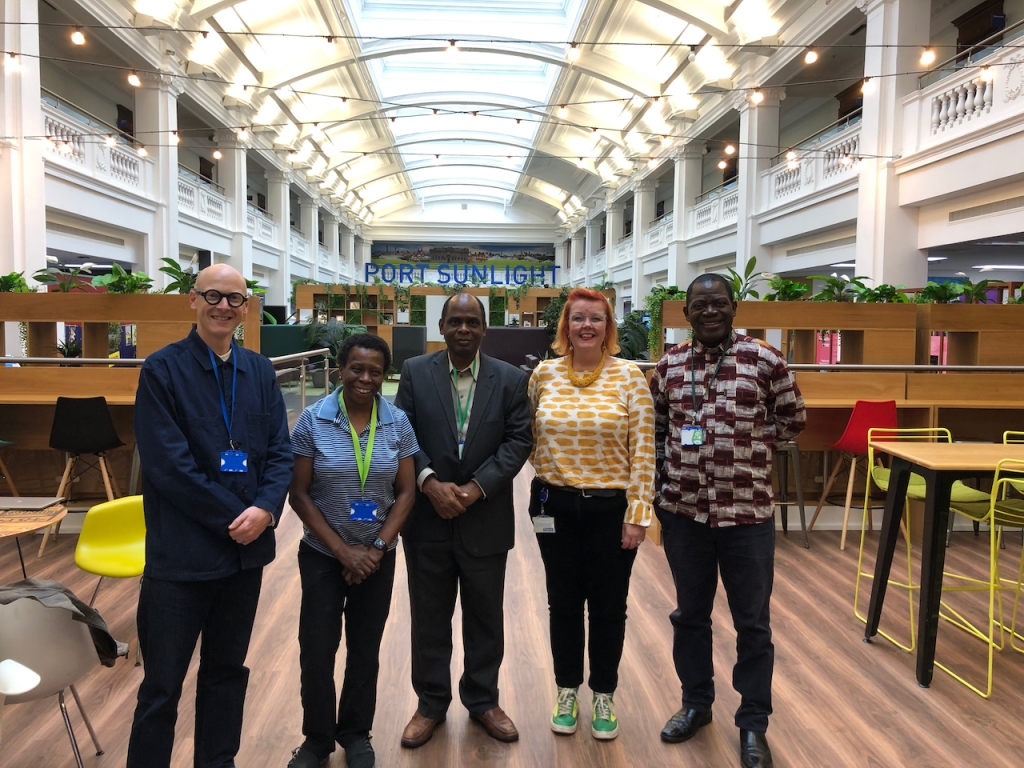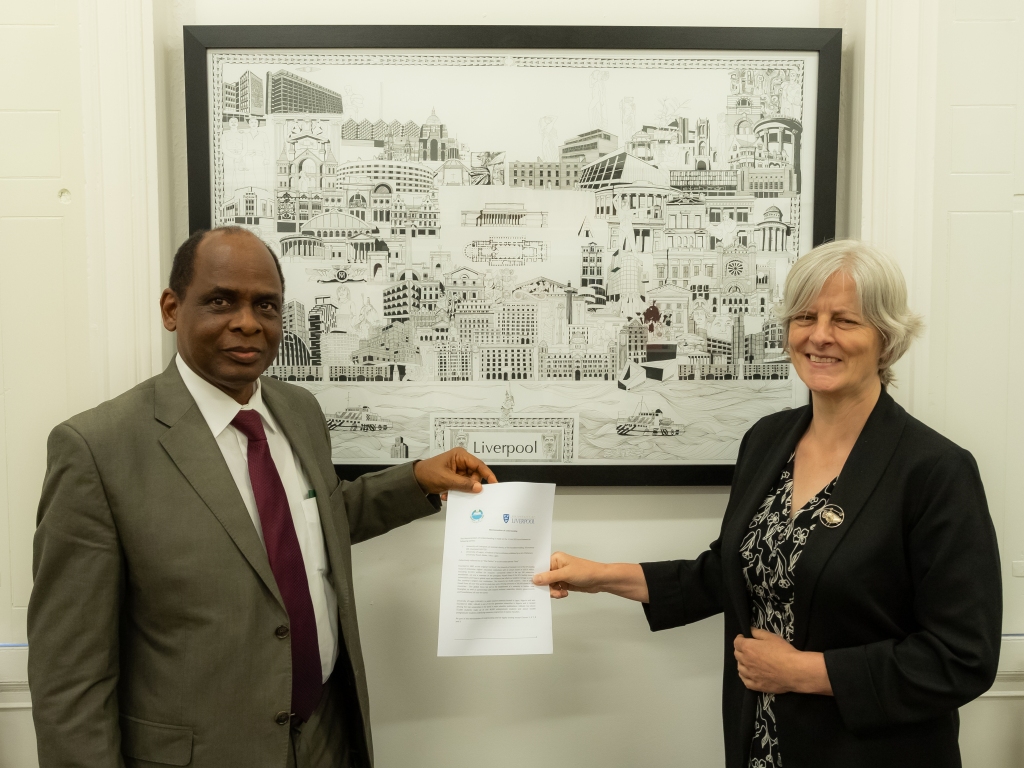Ghosts, Gifts and The Red Clay Revolution
By Iain Jackson and Martin Wallace
Ibrahim Mahama is a man on a mission. An artist whose raison d’etre is both to provoke questions about Ghana’s colonial past and to inspire actions towards a more positive, equitable future. Hot on the heels of his Purple Hibiscus work at the Barbican, ‘Songs about Roses’ opened in Edinburgh’s Fruitmarket on 13th July 2024.
But in some ways, these and his other international shows are just the tip of the iceberg because the main event is on the outskirts of Tamale, northern Ghana, where Mahama was born. In July he showed us around and shared the thinking behind the immense project.

For the past 9 years, Mahama has used the proceeds of his international career to build art ‘infrastructure’ in Tamale from the ground up. He has created a huge studio-gallery-archive complex called Red Clay. It’s here that much of his work returns after it’s been exhibited around the world, put on display in vast colonnaded hand-made brick structures with polished terrazzo floors. When he’s not working elsewhere, he lives on site. This is an artist’s studio with a difference. Open to the public; there is no entrance fee. It is a gift.
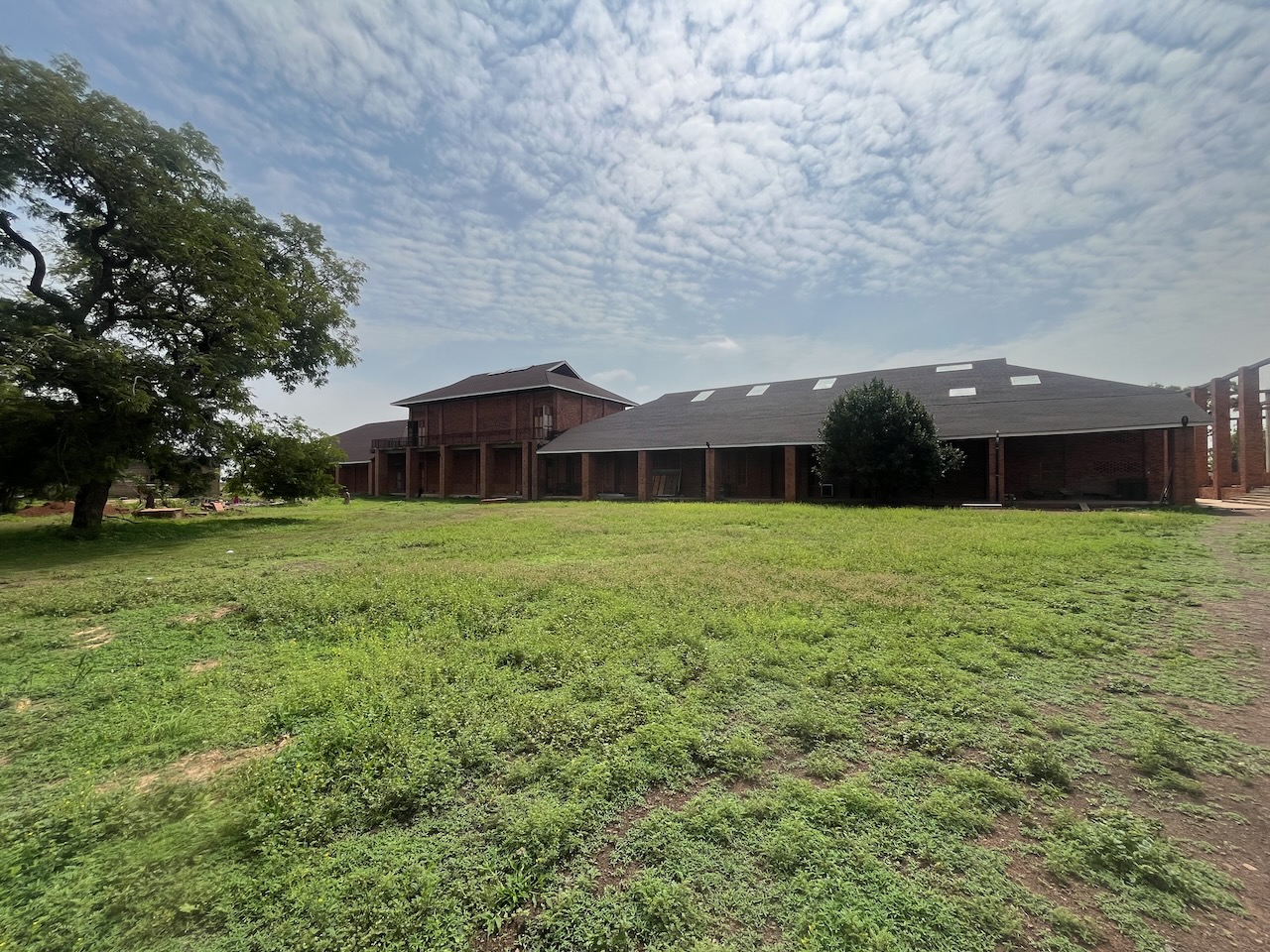
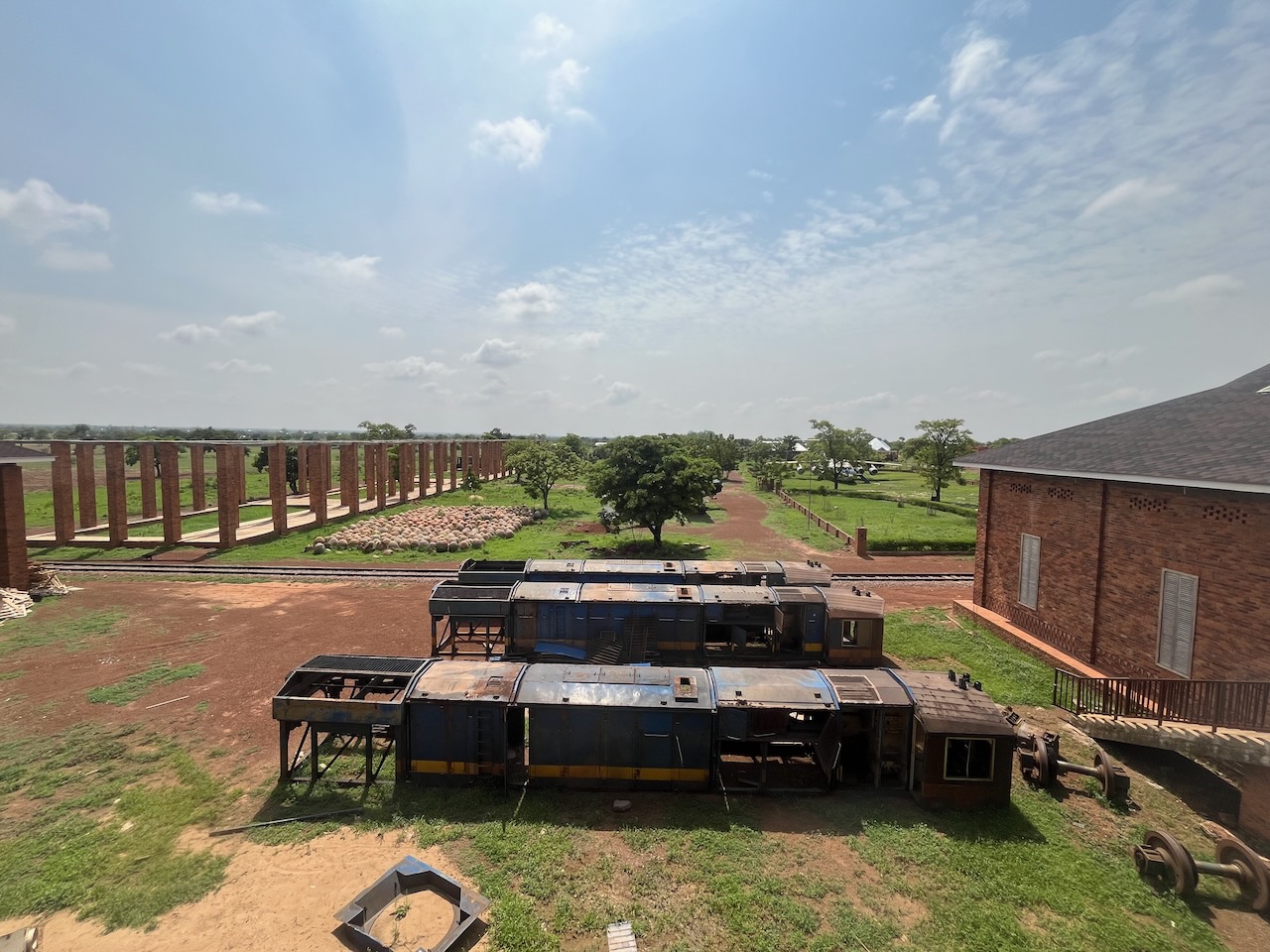


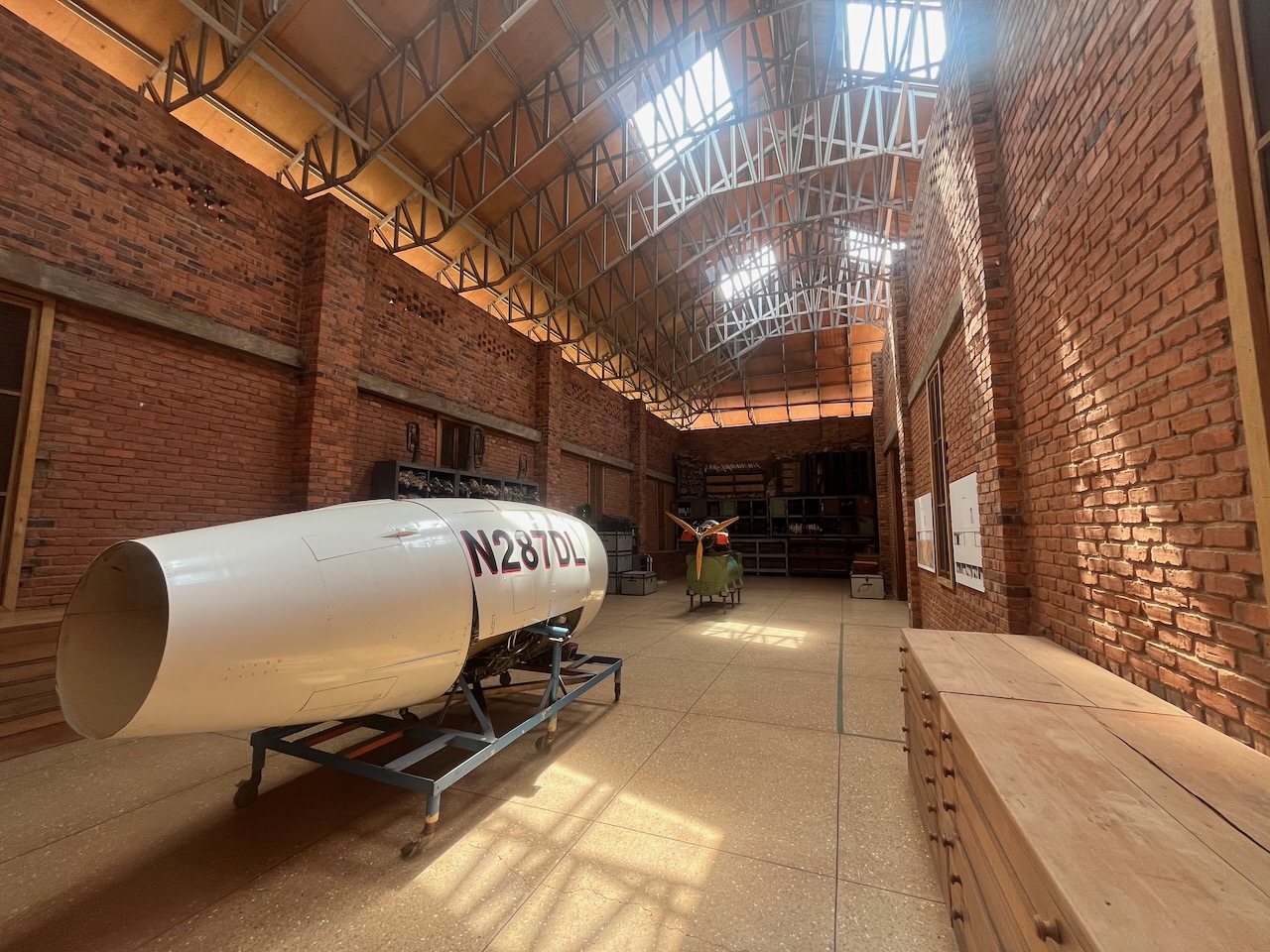
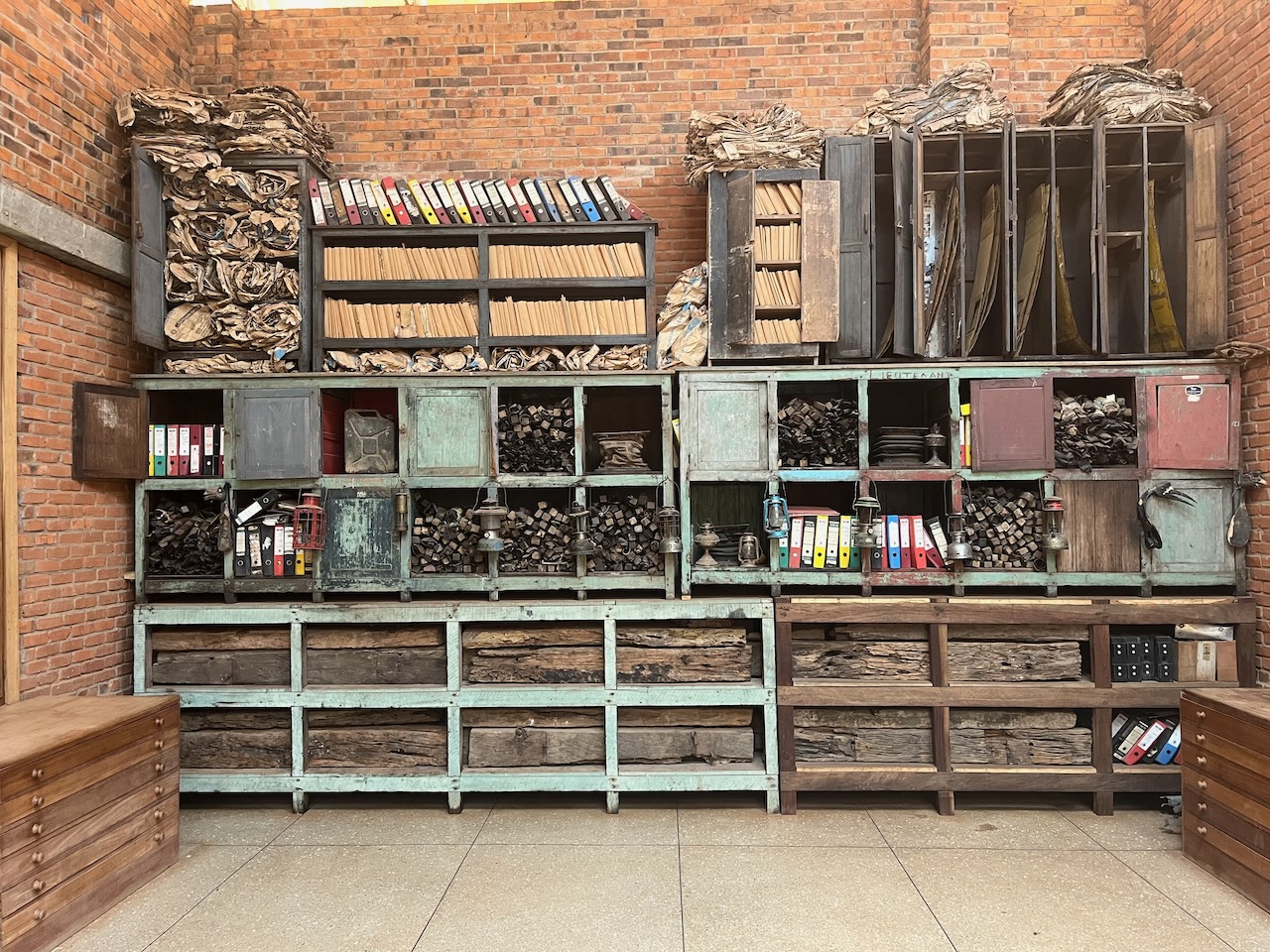

Recognising the economic precarity of the vast majority of Ghanaians, Mahama ‘wants the people of Tamale to be able to experience this art, and the best art made by others too.’ An exhibition on James Barnor’s photography is currently on show. ‘Even if they could’, Mahama asks, ‘why should they have to travel to the Serpentine to experience this art?’ A full retrospective of Barnor’s work is on show in SCCA, a sister institution built by Mahama on the other side of Tamale. It is another, large-scale, free-access space dedicated to platforming under-appreciated Ghanaian artists of the past. A disused concrete silo structure has also been acquired by Mahama in Tamale. Left abandoned and unfinished following the 1966 coup it became a ruin before it was even finished. Mahama has renamed it Nkrumah Volini and uses it to discuss the political shifts in Ghana’s history as well as showing films and installations.
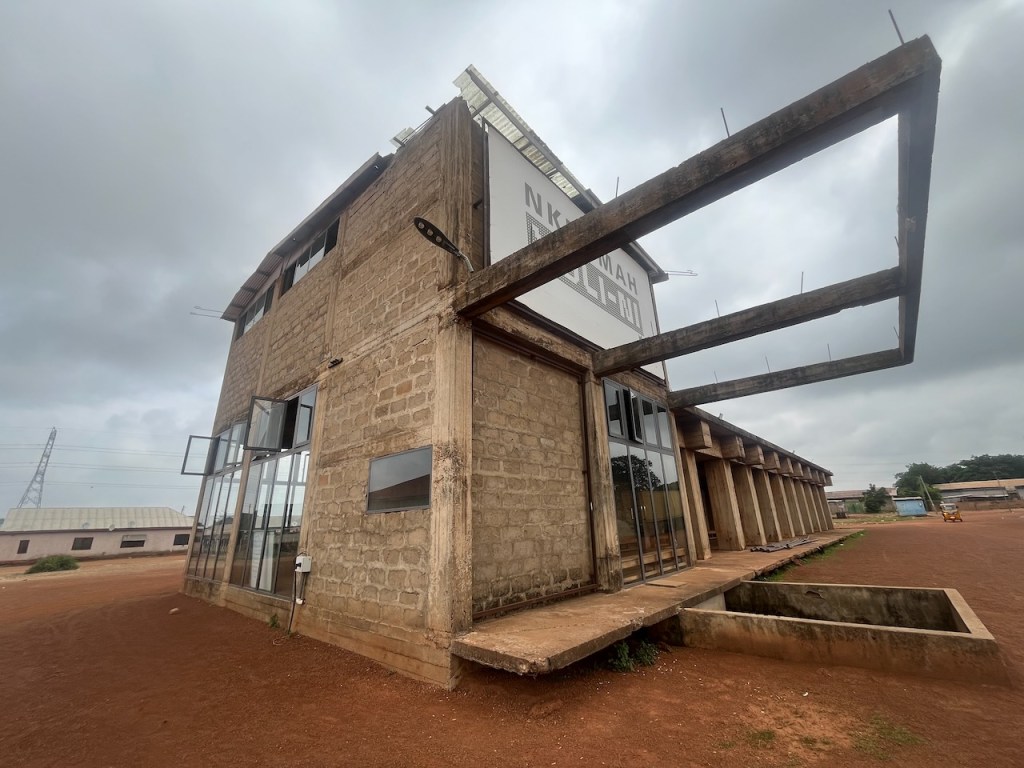
While Red Clay draws international visitors each week, the vast majority of its patrons are local people, some bringing picnics to the only free public space in Tamale. Busloads of children from schools in neighbouring villages are allowed to touch and explore these vast installations. The big idea here isn’t about art per se but to use objects and their material histories (their ‘ghosts’) as an invitation to ask questions and begin to imagine future possibilities. It’s about demystifying technology, sparking curiosity, and encouraging a desire to pursue visions through creative problem solving.

This invitation is backed up by educational opportunities. Classes for building PCs and coding are delivered in one of the seven aeroplanes Mahama has brought to this rural savannah, creating something of a surreal transport hub where the journeys are cerebral rather than physical. He also imported old trains from Germany that are in the process of being converted into accommodation for visiting artists (including the one used by Queen Elizabeth II when she visited Ghana in 1961).
When the railways were built in Ghana they did not extend into the northern territories, and many local visitors have never encountered a train before. Leading us through the now gutted carriages, Mahama reminds us about the immense amount of labour involved in making the colonial railways. He speculates on how many tonnes of resources and produce machines like these helped to extract during the colonial period. His work operates on these differing layers – at once an engaging and accessible spectacle that evokes traces of the histories of industry and technological innovation, whilst also critically examining the deployment and impact of these machines.

Informal tours of Red Clay are delivered by a series of local ambassadors employed by Mahama. They make the ideas at play accessible to local visitors in their own language, Dagbani. It’s a place where children and families are welcome. Letting people see processes rather than only the finished art pieces is also part of the offer. When the trains and planes were transported across country on flatbed lorries, Mahama documented their conspicuous journeys and the quizzical, joyous public response; bold, large-scale action that provokes excitement and a sense of ambition.
In one of the giant red-brick rooms, preparations for a New York show at White Cube in September are underway. A team of local women dip their brushes into the same black ink sometimes used to create semi-permanent eyeliner. But here they graffiti names and words agreed with Mahama across rough reclaimed leather panels that have been ripped from the floors of the train carriages as part of the refurb. Nothing is wasted. The humdrum is defamiliarized and ghosts within materials are encouraged to tell their tales.

In another brick-built hanger, women have walked from miles around to swap their tired, old enamelled bowls for shiny, new aluminium ones. Mahama wants the old ones as an index of the thousands of hours labour their battered frames represent. He has exchanged about 1500 and plans to balance a diesel locomotive on the old bowls, echoing the usual way in which the bowls are carried on the head to transport all manner of produce around every village and town.
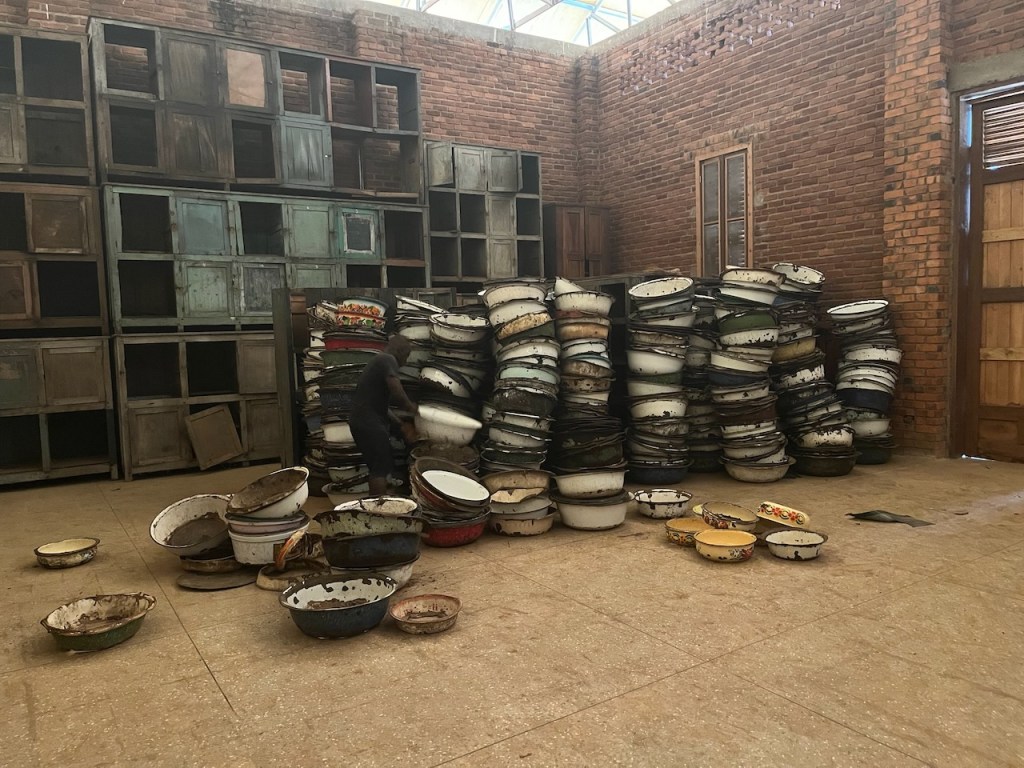

In one of the huge gallery spaces lit by towering windows is a piece first shown at White Cube Bermondsey 2019-21 entitled, ‘Capital Corpses’. Rows of gnarled desks salvaged from schools are mounted with old sewing machines facing a wall of blackboards replete with chalk lessons. When the machines are started by remote control, the clatter is at first startling and then uncanny; a room full of invisible operators burst into life, summoned to an unknown task. The school desks conjure an idea of children as future factory fodder. Like so much of Mahama’s work, he counterpoints a certain nostalgia and appreciation of familiar historic objects with an acknowledgement of the stark horror that these things, machines and regimes inflicted.

Mahama and his team have achieved a lot in Tamale over the last 9 years but much remains to be done to complete his revolutionary vision and unlock the full emancipatory potential of art. But he’s clearly in this for the long haul, determined to explore Ghana’s complex colonial history and to speculate about its possible futures. Red Clay is a place where these ghosts of past and future mingle in powerful ways and invite us to play.
